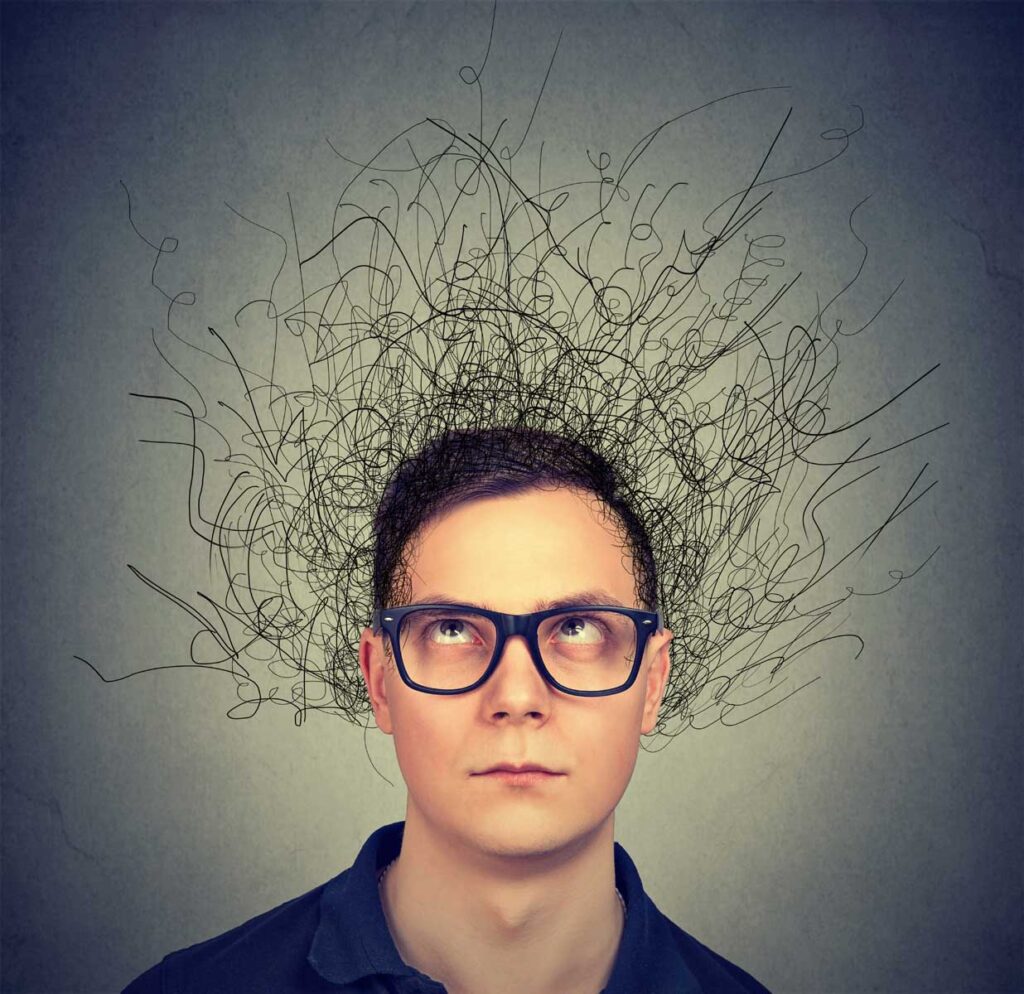Attention-deficit hyperactivity disorder (ADHD) is often associated with hyperactive children, but many adults—especially women—go undiagnosed for years. ADHD is a neurodevelopmental disorder believed to result from a deficiency in the neurotransmitter dopamine. It affects things like memory, attention, focus, mood and learning. ADHD brains constantly seek experiences that spark dopamine release – like taking risks and exposure to new things and change.
In many ways, ADHD can be a superpower. When something catches our interest, we can hyperfocus, quickly gaining skills and knowledge. We take well to fields like medicine, communications and tech where things change often and rapidly. However, it can also make it challenging to control our attention, leading to things like time blindness, poor executive function and chronic stress.
Recognizing ADHD in Adults
Unlike the stereotype of the fidgety (often male) child who can’t sit still, ADHD in adults often manifests in more subtle ways. Time blindness makes time management challenging, leading us to take more time or not enough time on tasks. We can forget important appointments without the right systems in place to keep us on track. Dopamine from taking risks can lead us to impulsivity. Many adults with ADHD also struggle with emotional regulation, frequently feeling overwhelmed or frustrated, which can be made worse without a diagnosis to understand why these things are happening. An internal monologue I’m all too familiar with is “Why can’t I just get myself together?”
As undiagnosed children with ADHD become adults or parents themselves, the strategies that helped us cope with our symptoms can start to fracture with the added stressors of new responsibilities.
The Impact of a Late ADHD Diagnosis
Many adults don’t receive an ADHD diagnosis until later in life, often after years of misdiagnosed anxiety or depression. Women, in particular, are more likely to be overlooked because they tend to internalize symptoms rather than display external hyperactivity. Unmanaged ADHD can make work, relationships and daily life feel overwhelming.
Unlike the common perception of ADHD, my struggles were quiet—missed deadlines, forgotten tasks and racing thoughts that I couldn’t fully explain or understand as “anxiety” alone. In my 20s I was diagnosed with Generalized Anxiety Disorder and Irritable Bowel Syndrome (IBS). While this was helpful in some ways, I felt like I was still missing a key piece of the puzzle. At 31, I worked with a specialist, and after a formal assessment, I was finally diagnosed with ADHD-inattentive type.
While relieved to finally have answers, I also mourned how long my struggles went unrecognized and unsupported. How different might my experience had been if I was diagnosed as a child? How would that understanding of myself have better equipped me for navigating life’s challenges?
Finding Support and Managing ADHD
Diagnosis is just the beginning. Treatment options include medication, therapy and specialized coaching to help work with the differences in how our brains operate. For me, a combination of using new systems to stay organized and starting medication helped me in ways I never thought possible. While I still experience feeling like my brain has too many browser tabs open, my anxiety is much easier to manage now that I’ve been diagnosed.
If these experiences feel familiar and more frequent than not, it may be worth exploring ADHD as a possibility. Seeking help can be life-changing—and it’s never too late to start.
Kelli Curl, Director of Office of Policy and Public Affairs at Jefferson County Public Health






